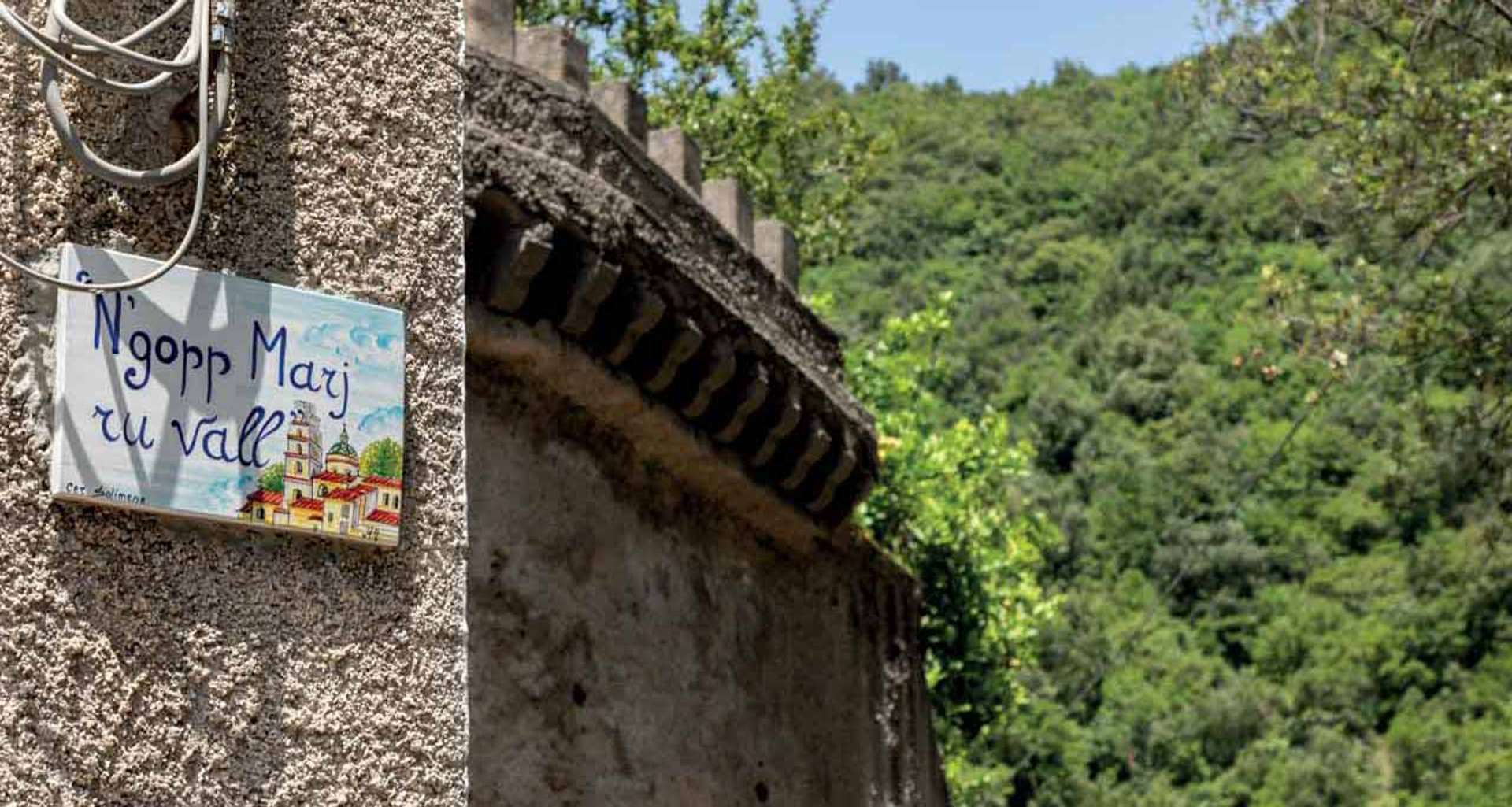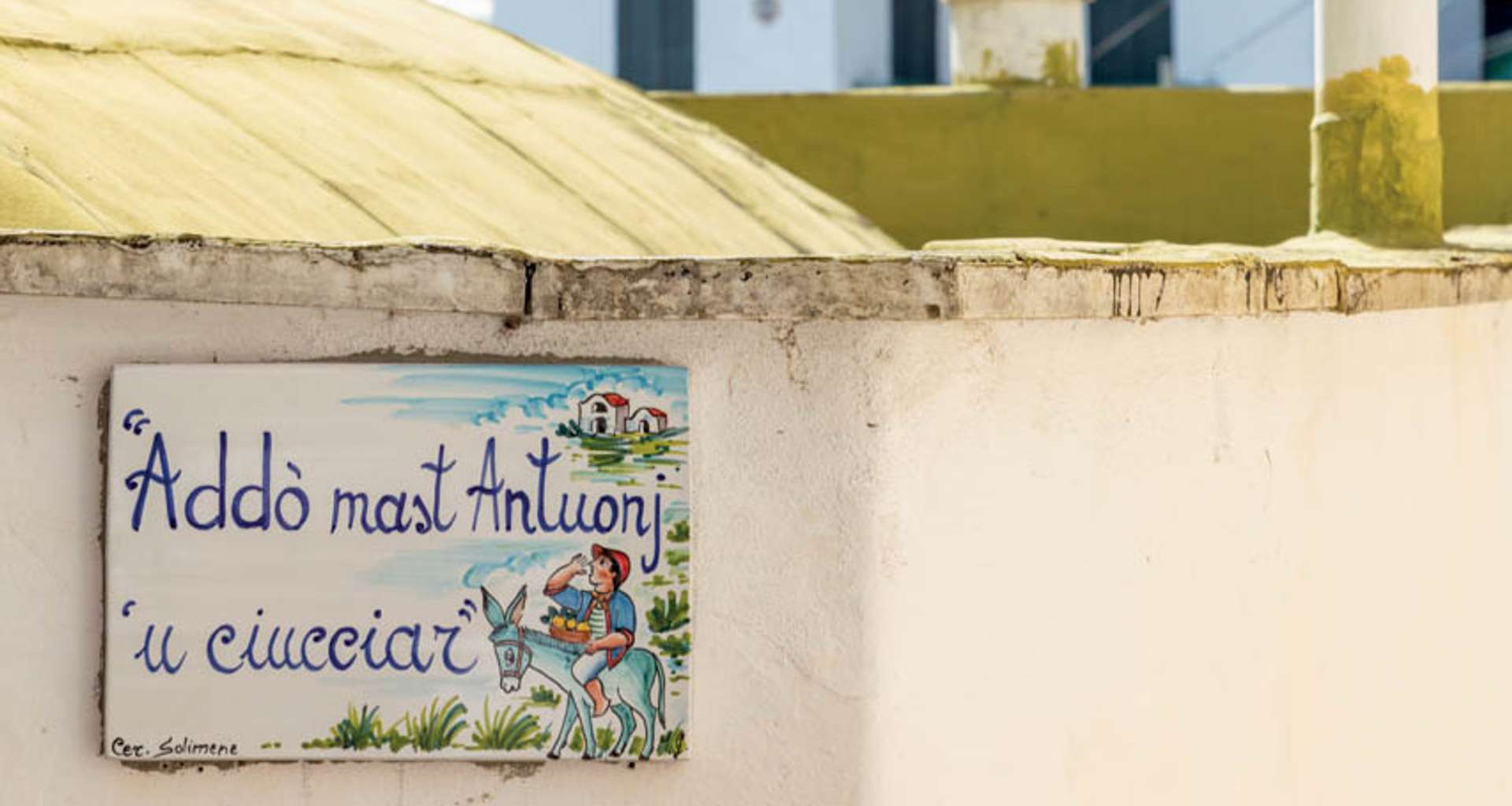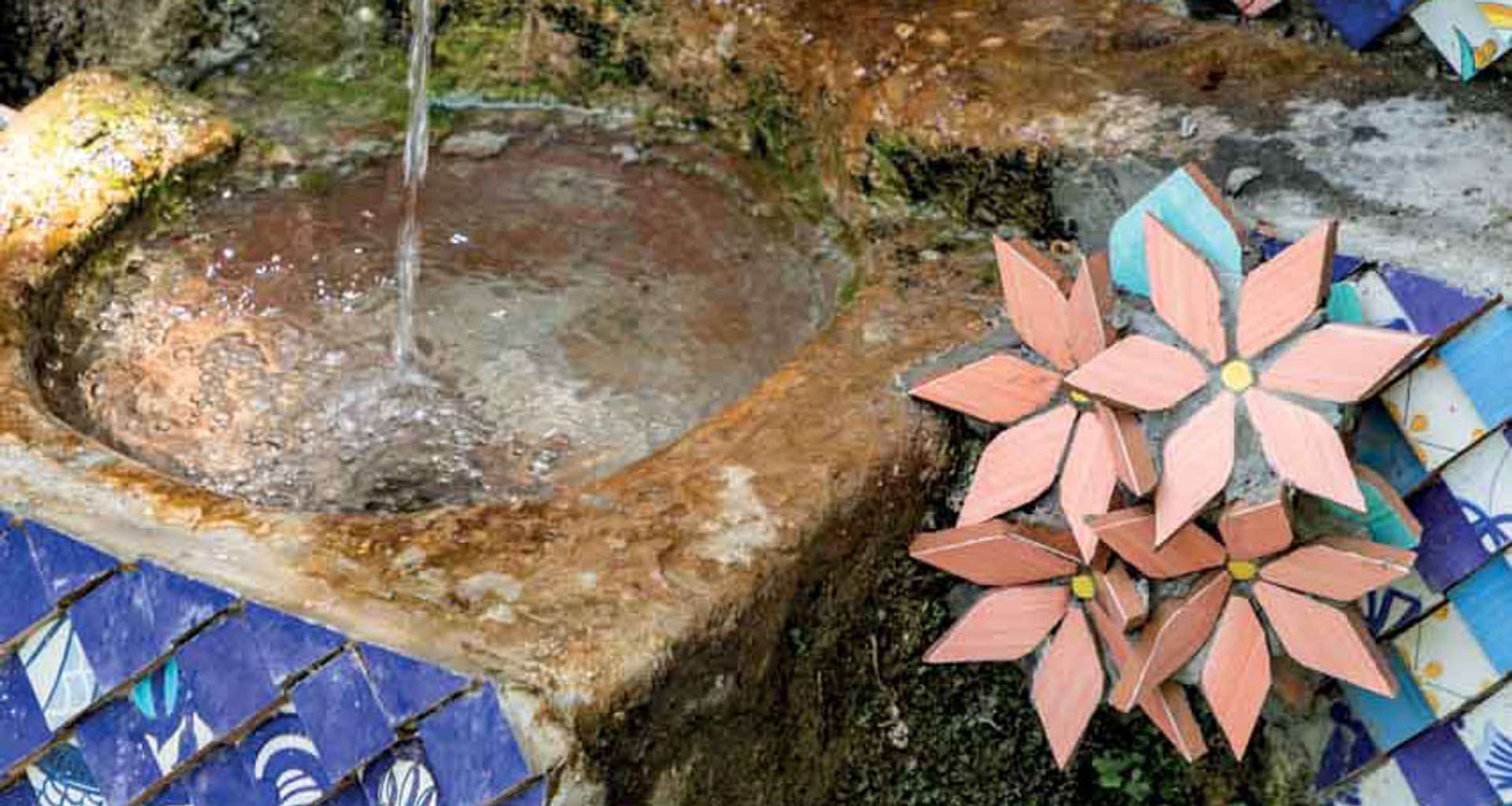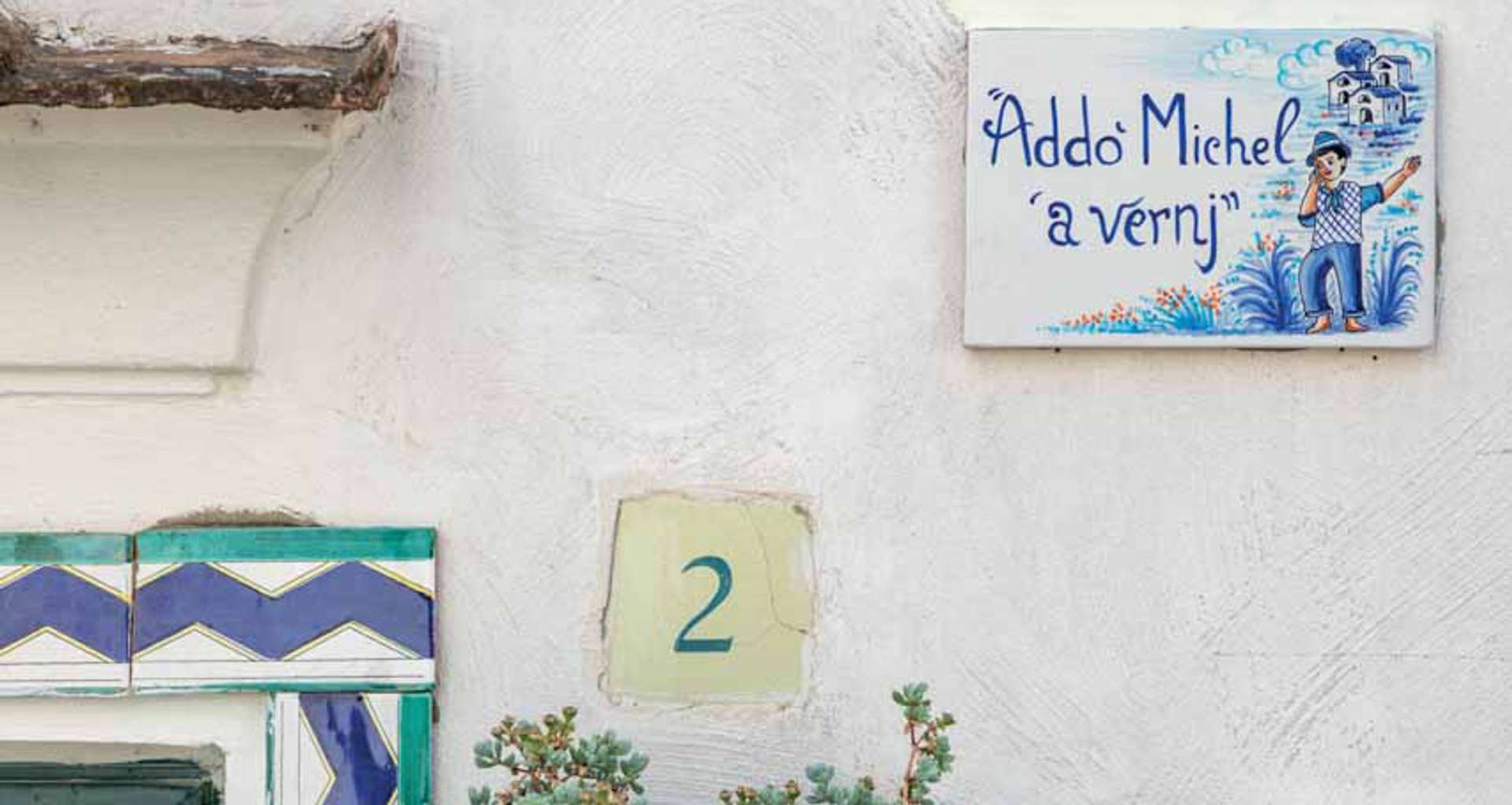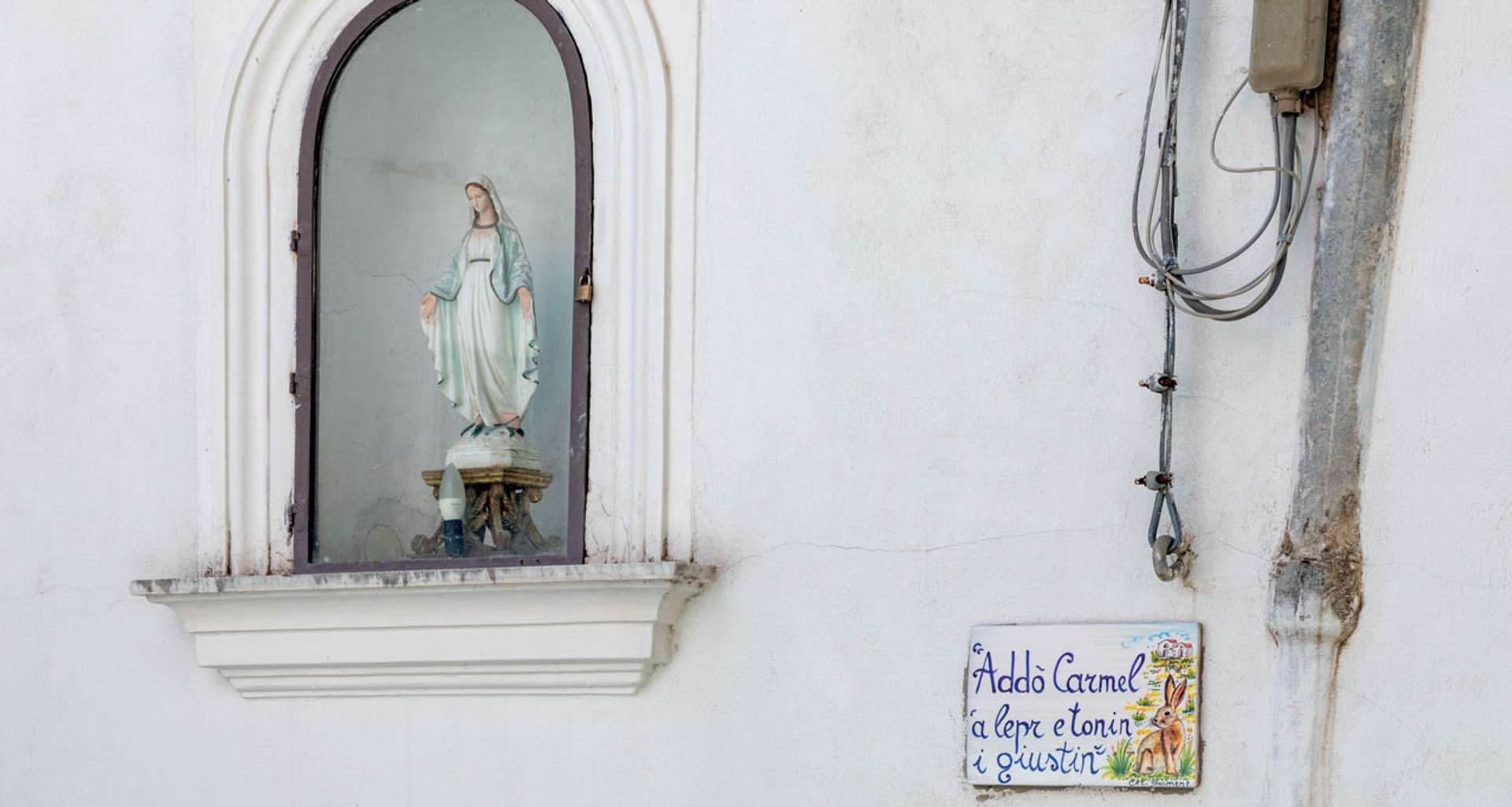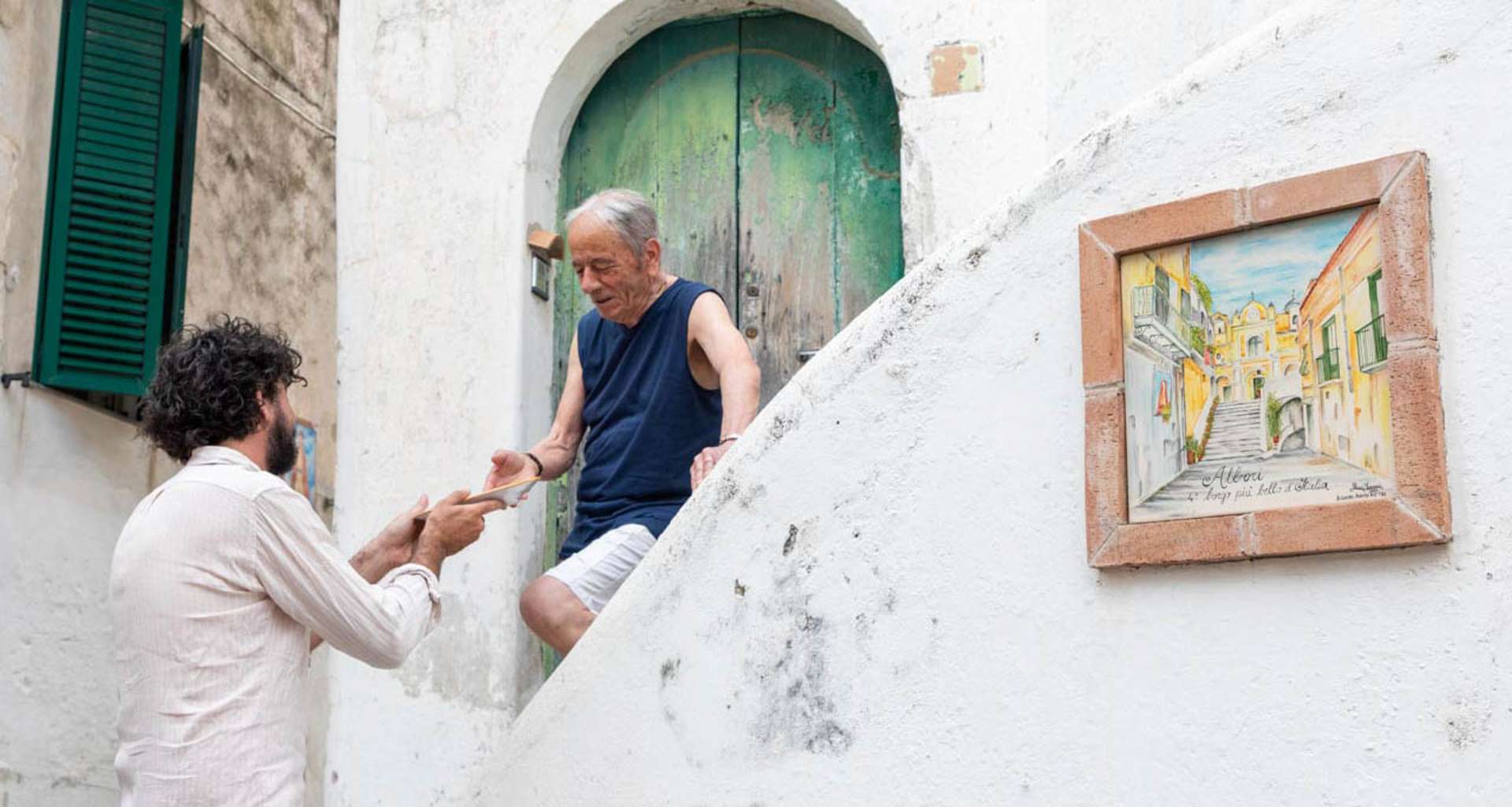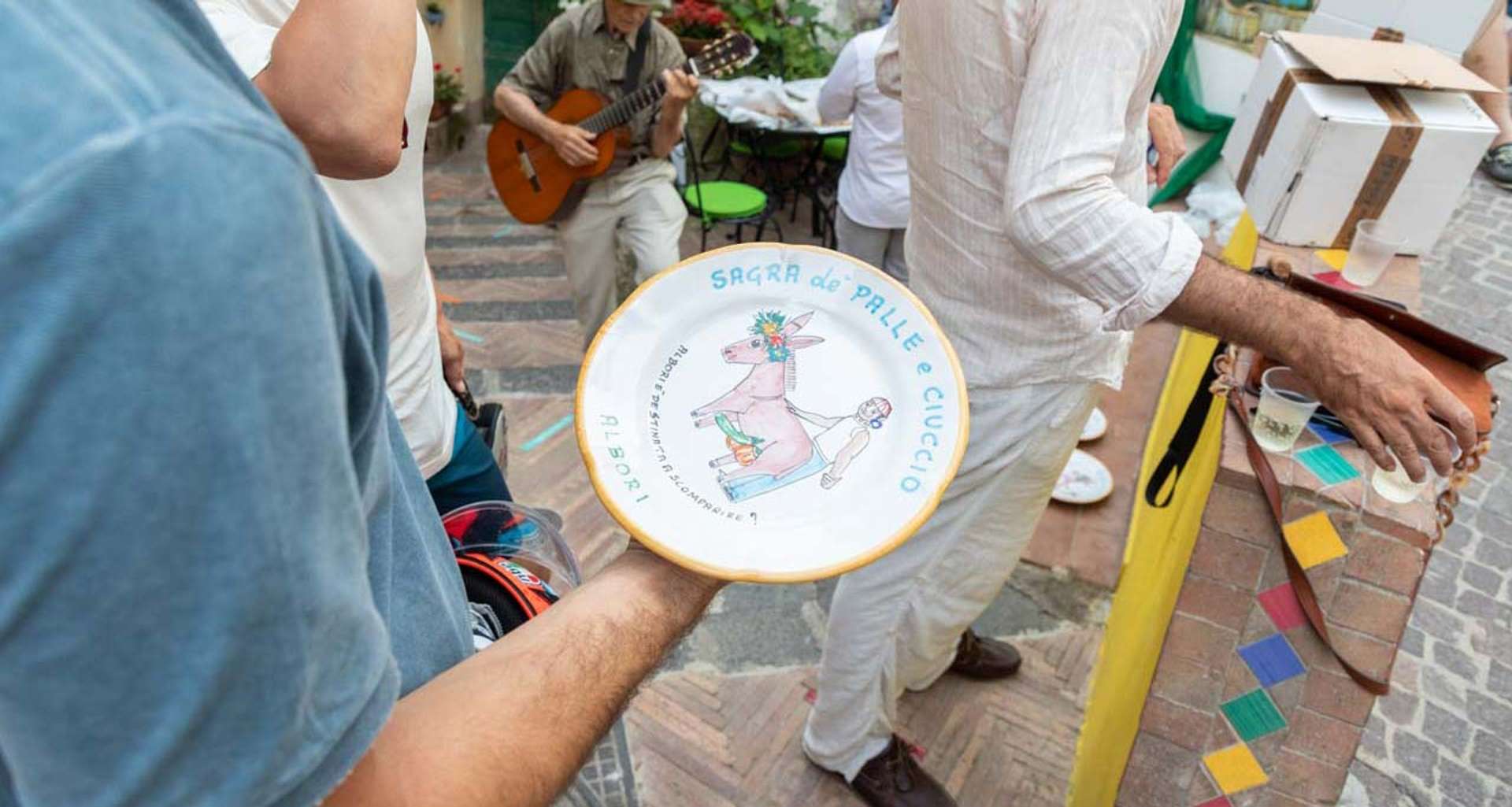Fabrizio Bellomo’s widespread project for the village of Albori arises from a question and a dialogue with the locals. It consists of 5 micro-projects involving different people, with the aim of strengthening the identity of the village and bringing out the story of some traditions. For this project, several collaborations have been activated with some local artisans and workers from nearby Vietri sul Mare.
Iconografia della sagra (Iconography of the festival) was created to spread and hold in our memory the traditional “Sagra de’ palle e ciuccio” (“Festival of the pacifier balls”). 200 plates designed in collaboration with Giancarlo Solimene on which is depicted the symbol of the historical festival, a female mule with pumpkins as masculine attributes, will be donated to local people.
The work Gli scagnanome (from the local dialect The nicknames) came about from the stories told by the village residents and above all with the help of Michele, Maria and Amalia, co-authors of the project. These are ceramic toponymy plaques with the nicknames of old inhabitants who lived in houses without precise addresses or signs, and which have become identifiers of a specific place.
With the other three projects, the artist wanted to emphasize the contemporary contingencies that entirely overshadow the village and what remains of its twentieth-century and previous social structure.
La casa di maria (Maria’s home) is a mini documentary visible by scanning the QR code in front of the house once inhabited by Maria and her children, who still talks about it with nostalgia and melancholy. Hotel fuenti is a led sign realized together with Rosa Musco. The writing refers to the well-known story of the local Amalfi Hotel which was commonly called “Hotel Fuenti” and from which the Italian term Ecomostro (Eco-monster) came.
Dimenticare i propri antenati significa essere un ruscello senza fonte (Forgetting your ancestors means being a stream without a source), realized together with Emilio Pellegrino, is a work of rehabilitation of a pre-existing structure left in a state of neglect at the source of water known as “del Cesare”. Scraps of ceramic tiles now cover the bench and the fountain. The Chinese proverb of the title will be then fixed.
ㅤ
Permanent works:
01. Fabrizio Bellomo, Gli Scagnanone, 2022, iwidespread installation, painted ceramic pla- ques made in collaboration with Ceramica Artistica Solimene, 20 x 30 cm each.
Via Piliero, 39, Albori (SA)
ㅤ
02. Fabrizio Bellomo, La casa di Maria, 2022,short documen- tary made in collaboration with Friccicarella Film, 10’ QR code
ㅤ
03. Fabrizio Bellomo, Dimenticare i propri antenati significa essere un ruscello senza fonte, 2022, fonte del Cesare restored with cut-outs of ceramic tiles made in collaboration with Emilio Pellegrino.
ALBORI IS DESTINATED TO DISAPPEAR IS ONE OF THE PHRASES THAT HAS BEEN REPEATED TO ME DURING MY DAYS ON THE AMALFI COAST. I DON’T KNOW IF ALBORI WILL DISAPPEAR OR IF IT HAS ALREADY DISAPPERED, I ONLY KNOW THAT OTHER PHRASES HAVE REMAINED WITH ME, LIKE HERE IN THE SUMMER, THE SMALL WHEELED SUITCASES COME AND GO…OR THE COMPLAINTS ABOUT THE TOURIST BUS SERVICE THAT CONNECTS ALBORI TO NEARBY VIETRI SUL MARE; IT IMPROVES DURING THE SUMMER AND IS SCARCE DURING THE WINTER…E NOI SIAMO CHIÙ SCIEM (FROM THE LOCAL DIALECT, WE ARE THE MOST FOOLISH)
Fabrizio Bellomo (Bari, 1982) lives and works in Bari. He is a multi-disciplinary artist, director, curator and writer that carries out his research in a hybrid and experimental way. His approach to the art is broad: he works with archival and historic material, videos and public installations. His art switches between the real and the digital world. His works have been exhibited in personal and collective exhibitions, through public projects, film festivals and presentations. He has attended 39° Torino Film Festival; 38° Torino Film Festival; and Padiglione Italia alla 16° Biennale di Architettura di Venezia, collaborated with Fondazione Giangiacomo Feltrinelli, La Repubblica, MuFoCo, Apulia Film Commission and ICCD. He has exhibited his work at MACRO – Roma; Triennale di Milano; KCB – Beograd; Fundaciò Enric Miralles – Barcelona; Galeria Fab – Tiranë; IIC – Tokyo. He has published artist’s books and essays for Postmedia Books – Milano; Centro Di – Firenze; Quinlan edizioni – San Severino Marche. He has won several awards and grants including: Special Jury Award at 39° Torino Film Festival (Italiana.doc); Italian Council 10; Inside Art Award at Talent Prize 10 and the Best Film at 39° Bellaria Film Festival. His work is part of public and private collections including: MuFoCo Milano; ICCD Roma; Simmons & Simmons Art Collection London/Milano; NCTM e l’arte Milano.
FROM A QUESTION AND A DIALOGUE WITH THE LOCALSCOMES FABRIZIO BELLOMO'S WITH THE AIM OF STRENGTHENING THE IDENTITY OF THE VILLAGE AND BRINGING OUT THE STORY OF SOME TRADITIONS
Albori is a small village, a hamlet of Vietri sul Mare, with a population of around 300 inhabitants.
Situated between the sea and the mountains, it rises up in front of the beautiful Mount Falerio while enjoying a panoramic view of the Gulf of Salerno. There are several hypotheses on the etymology of Albori, but the most accredited would be “Albole” due to a mineral water source (aqua albula) that exists in the area. Historical sources give little information on its origins. Around the year 1000, the whole Vietri area was sparsely populated. Due to Lombard princes gifting land to Amalfi and Atranese families of Nordic origin, and to the subsequent colonization promoted by the Monastery of SS. Trinità di Cava, the area became home to many small hamlets that were independent from Salerno and from the Cava Abbey. This process led to Albori being mentioned as a hamlet as early as 1324, even if it still had to wait until 1610 to have its own independent parish.
Today, Albori appears as an agglomeration of whitewashed houses, arranged on several levels and connected by narrow alleys that can be explored on foot or by mule, which are still used today for the transport of goods and materials. In the heart of the village, you’ll find the parish church dedicated to Santa Margherita di Antiochia. Inside the sacred building, there are frescoes from the Neapolitan school, which boasts amongst its exponents the Baroque decorator Francesco Solimena (1657-1747). The Museum of Ceramics is in the turret of Villa Guariglia where you can find Vietri ceramics dating from the eighteenth century to the first half of the twentieth century.
